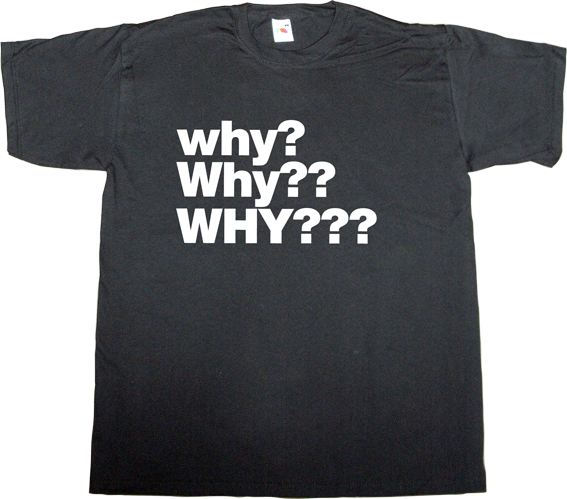A guest blog post by my friend and former colleague Joe Howard. Over the years, Joe has tried to help me understand the basics of physics, the true meaning of infinity and the importance of persistently asking tough questions like why.
When action is valued more highly than thinking, and assumptions dominate over facts, the generation of ineffective solutions to ill-defined problems is inevitable!
Jeff recently wrote of the need to ask “What exactly is the real problem we are trying to solve?” before rushing into possible solutions.
I learned a great technique from the area of Health and Safety (H&S) for identifying “the real problems”. This proved to be useful in many other business areas.
The key to the technique is to ask “Why” a minimum of three times once the issue is thought to have has been identified.
The vision of H&S is “zero accidents”. When accidents do occur, the aim is to ensure they are not repeated. Although the following real example is from H&S, an equivalent starting point might be “Our new product is not selling”.
Scenario: A factory employee had slipped on the factory floor and injured both his knee and head.
The action approach would lead to the problem being identified as, “The floor was slippery.” and to solutions like:
- instruct all employees to watch where they are placing their feet
- issue footwear with non-slip soles
- install a non-slip floor
Let us use the new process:
Why?
(did he slip)?:
(did he slip)?:
There was water on the floor.
“Action” approach solutions would be:
- an instruction for all spills to be cleaned up immediately
- provision of mops and buckets
- barriers made available to prevent access while cleaning and the floor is drying
Continue the process:
Why?
The bucket for carrying the water was full and it spilled over the side.
The bucket for carrying the water was full and it spilled over the side.
Instant action leads to:
- Provide bigger buckets
- Provide buckets with lids etc
Back to the process:
Why?
Because the water needed for the process is not available in the work area and has to be carried there.
Because the water needed for the process is not available in the work area and has to be carried there.
Why?
Because the machinery was moved to increase efficiency.
Because the machinery was moved to increase efficiency.
Now we see the real problem:
“The source of water required for the factory process is not located where the water is needed.”
None of the 8 “action” solutions listed above addressed this problem! A solution was to pipe the water supply in to the machine so that no container was required and spills were contained within the system. This met the objective of no possibility of repetition.
Applying the Why, Why, Why to Marketing
At a sales/marketing meeting we were discussing the alternative issue mentioned above; “Our new product is not selling”. “Action” solutions to this ill-defined problem immediately led to solutions like; “increase advertising”, “lower prices”, ” “improve product performance” etc.
Using the process and answering questions with facts, not opinions, identified the real problem-which was far removed from those identified in the “heat” of the moment. Time was spent researching the answers to questions, which was stressful for the action-oriented team members!
For attentive readers!
The solution to the H&S issue described above is effective, but I hope you realized that the process has been ended too soon!
Continuing:
Why?
Because the full implications of the equipment move were not considered.
Because the full implications of the equipment move were not considered.
Why?
There is no clear comprehensive documented process for managing change.
There is no clear comprehensive documented process for managing change.
The solution is to implement a comprehensive management-of-change procedure and train key employees to use it. The procedure covers all equipment changes, including new installations.
Now the solution is much deeper, more comprehensive and strategic . It solves not only the specific problem, but the generic one. Notice how constant awareness of the overarching clear goal helps guide us to the real generic problem.
Try the process. Do so diligently, if possible as part of a team, and you will find that it really helps.
~~~~~~~~~~~~~~~~~~~
About Joe Howard
A scientist by training, I spent my career initially as a university professor then as an executive in both large and smaller companies (based in Europe and the USA). While I held a wide variety of roles, their unifying themes were innovation and new business development. Although I’m not a professional marketer, I have worked extremely closely with, and been fascinated by marketing for over 25 years. I’m enthralled by the applications of modern research in behavioral psychology to leading edge marketing. Since leaving the corporate world I have taken up consulting and training, mainly in the areas of technology, research and innovation. You can reach Joe at: jhowardconsulting@nc.rr.com





